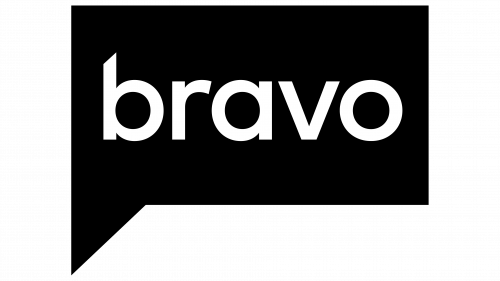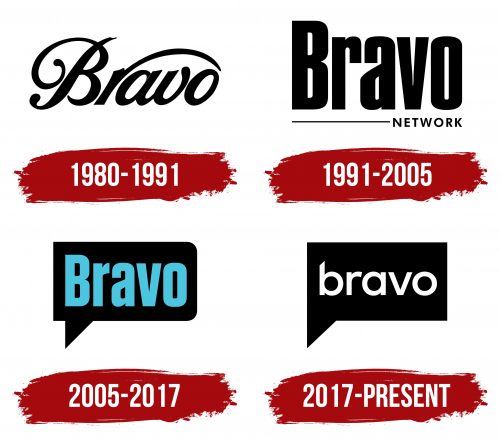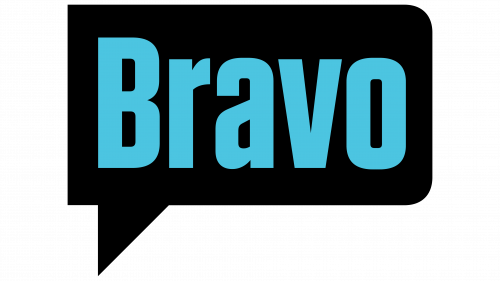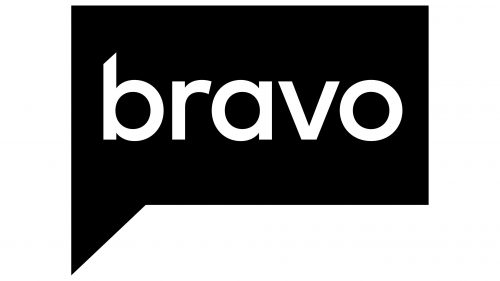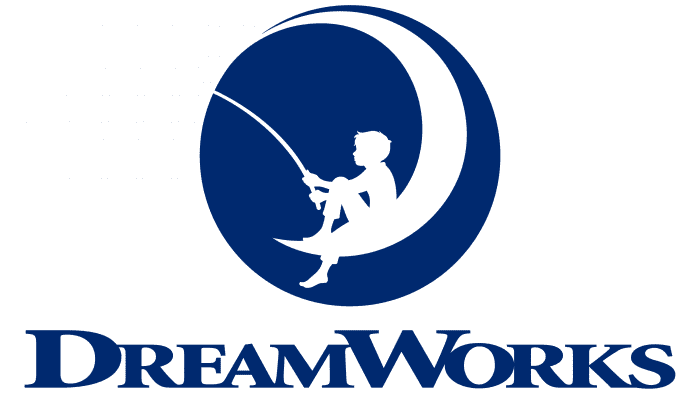The Bravo logo creates the feeling that the channel is conversing with viewers as if promising them unforgettable programs. It seems to communicate directly, reflecting an understanding of its audience’s tastes and preferences. This element of dialogue emphasizes that the channel is always “in tune” with its viewers, considering their interests and adapting to their needs.
The emblem represents modern television, offering a selection of the best and most beloved shows and movies, going beyond ordinary entertainment programs. The logo says, “We know what you like and have what you’re looking for.” It symbolizes the channel’s commitment to staying relevant and maintaining a connection with its audience by providing content that is always timely and fitting.
Bravo: Brand overview
Bravo’s history began on December 1, 1980, when Cablevision launched the channel. Initially, it marketed itself as a premium cable network, focusing on independent and foreign films and theatrical productions. At the time, this was a unique offering on American television, attracting a niche audience quickly.
In its early years, the network aired movies without commercials, which was uncommon for cable TV. This approach reinforced its image as a high-end brand catering to educated viewers. The programming lineup included documentaries, European films, and classic Hollywood movies.
A pivotal moment came in 1985 with the debut of “Inside the Actors Studio,” the channel’s first original show. Hosted by James Lipton, the program became a hallmark, featuring in-depth interviews with notable actors and directors, drawing more attention from film enthusiasts and industry professionals alike.
Throughout the 1990s, the network expanded its original programming to reach a broader audience. In 1992, it began airing the IFP Gotham Awards, a key event in the independent film scene.
A major ownership shift occurred in 1998 when Cablevision sold 50% of the channel to NBC. This partnership helped the network grow and access a larger audience. In 2003, NBC bought out Cablevision’s remaining shares for $1.25 billion, leading to a significant change in content direction. Under NBC’s ownership, the channel shifted from arts and independent film to more mainstream entertainment.
A breakthrough came with the launch of Queer Eye for the Straight Guy in 2003. The show’s immense popularity expanded the network’s audience and marked the beginning of its focus on reality and lifestyle programming.
This shift continued in 2006 with the premiere of The Real Housewives of Orange County, which sparked a hugely successful franchise that expanded to multiple cities across the U.S. Another major hit came in 2007 with the debut of Top Chef. This cooking competition became one of the channel’s most acclaimed shows, winning several Emmy Awards.
In 2009, NBC Universal, the channel’s parent company, merged with Comcast, providing even more growth opportunities. The network continued to develop popular reality series and explore new ventures in the following years.
The 2010s saw further expansion in programming. While reality shows remained dominant, the network also ventured into scripted entertainment with shows like Girlfriends’ Guide to Divorce (2014) and Odd Mom Out (2015). The first late-night talk show, Watch What Happens Live with Andy Cohen, launched in 2016 and quickly gained a following.
By 2020, the channel had established itself as one of the leading cable networks in the U.S., especially popular among female viewers. It continued expanding signature series like Below Deck and The Real Housewives while experimenting with new formats.
Between 2021 and 2023, the channel adapted to changing viewer preferences by increasing its online presence, creating content for social media, and exploring streaming services. It also experimented with fresh show concepts to attract a younger audience.
Over its more than 40-year history, the network has evolved from a niche outlet showcasing independent films and arts to one of the top entertainment brands in the country. Despite shifts in programming and audience, it has maintained its identity as a source of high-quality entertainment.
Meaning and History
What is Bravo?
This American cable television network has carved out a unique place in the entertainment industry. Initially created as a platform for performing arts, it eventually evolved into a major player in reality shows and lifestyle content. The network is best known for its popular series “The Real Housewives,” which offers viewers a unique glimpse into the luxurious lives of wealthy women from various American cities. The channel has attracted a large and loyal audience, particularly fans of dramatic reality shows, competitions, celebrity interviews, and behind-the-scenes content about glamorous professions. The network’s content often revolves around themes of fashion, food, beauty, and pop culture, making it appealing to viewers interested in lifestyle and entertainment.
1980 – 1991
The first Bravo channel emblem looks very refined and sophisticated. It is done in a smooth, ornate font, evoking associations with something highbrow and cultural. It is a true symbol of style and elegance. When the channel started in those early years, it focused on art and cinema, so this style was entirely justified. The font conveys that the channel broadcasts something important, cultural, and meant for connoisseurs.
The name “Bravo” is the word that audiences use to thank performers after an excellent performance. When viewers shout “Bravo!” they express their admiration for the artistry. In this way, the channel’s logo hints at its goal—to support and develop high art, making it accessible to viewers. It reflects the channel’s mission—to become a bridge between the world of arts and the general audience, showcasing what deserves applause and loud ovations.
The black-and-white color of the visual sign used in those years adds restraint and seriousness. This minimalism gives the emblem a sense of prestige as if emphasizing that the channel is not chasing after bright colors and light entertainment but offers viewers something important and worthy of attention.
This first logo perfectly conveyed the spirit of the times and the channel’s direction — art, style, and elegance.
1991 – 2005
The number of viewers sharply increased from 48,000 to 350,000 as the channel became a basic cable product accessible to a broader audience. This scaling process was reflected in the new logo, which featured large, bold letters. The characters are stretched upward as if predicting the channel’s further growth and expansion and attracting an even larger audience.
In the bottom right corner, neatly continuing the thin line of the logo, the word “Network” is added in small capital letters. This logo element resembles a scrolling ticker on a television screen, creating a sense of constant movement and progress, emphasizing the channel’s commitment to remaining modern and dynamic.
2005 – 2017
After the channel became part of NBC Universal and its programming became filled with popular reality shows, the logo was updated again. The emblem is now designed as a speech bubble, evoking live communication in the shows. This change symbolized the channel’s shift in a new direction, making it more relatable to the modern youth audience, who actively use social media, leave comments, and send messages.
The design, resembling a text message, reflects the spirit of the times, emphasizing that the company is always in dialogue with its viewers. The word “Bravo” in the speech bubble appears like an exclamation, expressing admiration and approval of the channel’s programs. This represents the enthusiasm of the audience and the channel’s ongoing commitment to staying relevant and connected with its viewers.
2017 – today
The Bravo logo changed with the release of the film Imposters. The black speech bubble background, resembling a dialogue window, was retained, symbolizing the brand’s core focus—communication, discussion, and the exchange of opinions. The speech bubble element evokes associations with lively conversations and active discussions on topics covered by the channel.
The text is now in a simple lowercase white font, giving the logo a modern and minimalist look. The contrast between the black background and the white letters draws attention to important themes of conscience, morality, and ethics, which became central in projects like “Imposters.” White symbolizes clarity, truth, and purity. At the same time, the black background creates a sense of depth and seriousness, highlighting the drama and tension often explored in the channel’s stories.
Interestingly, the shift from a softer, playful style to a strict and concise one aims to expand the channel’s audience, including attracting men. With its sharp and strong lines, this bold style reflects more masculine and mature themes that have now become integral to Bravo’s programming content.
This visual change was a significant step, aligning with a time when the brand was at the crossroads of more complex themes. It aimed to refresh its image while maintaining important elements from the past, such as the speech bubble, which symbolized conversation and interactivity.
